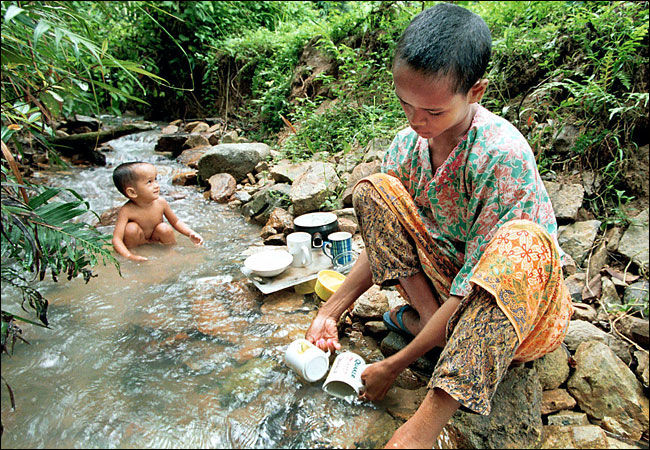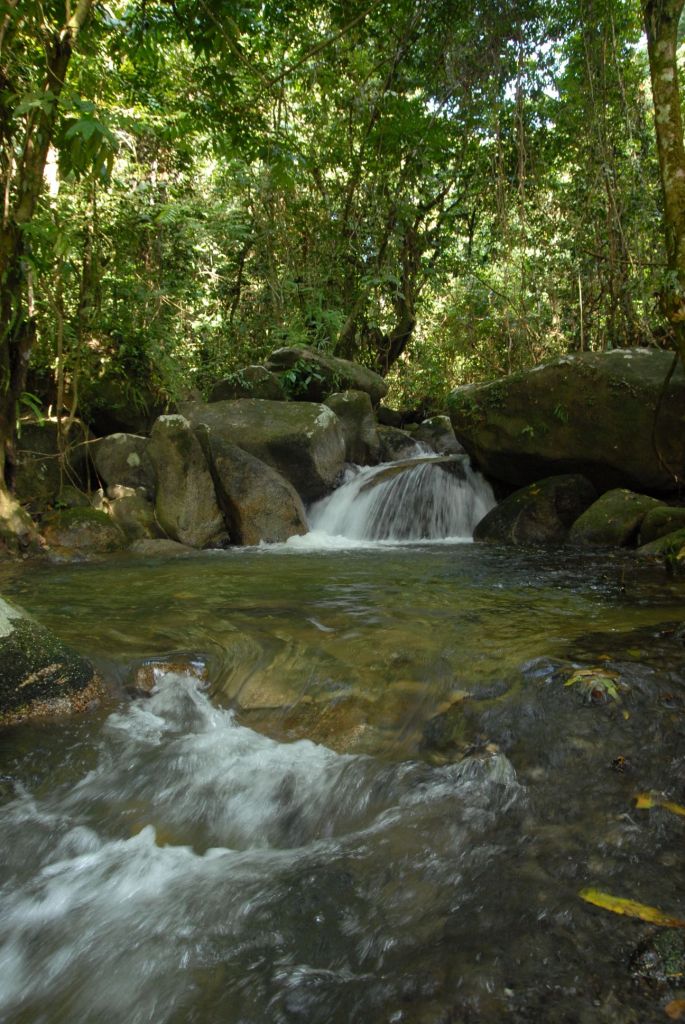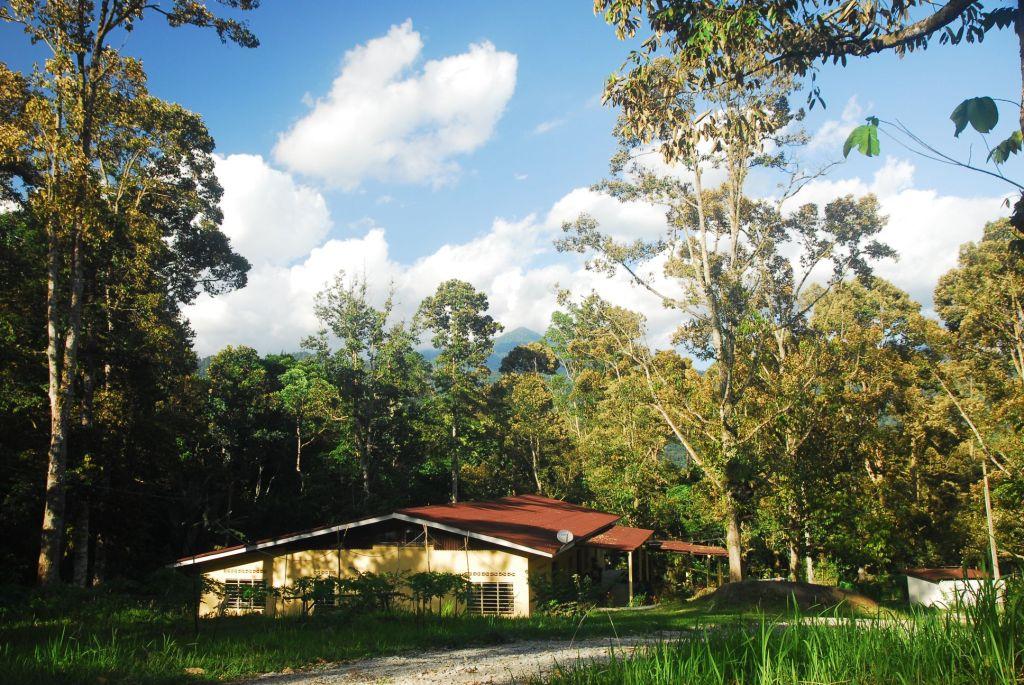
1 June 2013 by Adeline Lum CM-
What do you think about Orang Asli’s who live in poverty? Is your heart stirred in compassion or quite frankly, is your heart unmoved by their predicament?
As urban children, many of us lack compassion for them simply because we find them hard to relate to. While we’re scavenging for food in our refrigerators, they were out in the wild hunting for game. While we were taught to excel academically for our career, they were taught to sharpen their hunting and planting skills for survival. And while the society we grow up in is highly competitive and individualistic, they grew up in a communal and egalitarian society. We are consumers. They are preservers.

We may also owe our indifference of their poverty to their perceived choice of life, laziness, ignorance of modern economy and/or simple contentment in life.
“These are patronizing views on the Orang Asli but their value system is very different from us. Their priority is to keep the family together,” said Wong Young Soon, Executive Director of the Malaysian CARE who worked with the Orang Asli’s since 1992.
For instance, many of them do not want to leave their family because that means separation. In other words, unity in the family is more important than earning income.
“Although many of them (Orang Asli) graduated and worked in the cities, they eventually returned to their family in their land, after a few years of working,” said Young Soon.

Perhaps, we can understand their choices better if we put ourselves in their shoes. What would you choose if you could have either family or income? Remember… you can only choose one.
And indeed, Orang Asli is one of the poorest groups in Malaysia, upon a review done by Malaysian CARE on the impoverished segments of the society in the early 1990’s.
At 0.6 percent of the population, even the migrants overtook the population size of the 18 Orang Asli tribes in Malaysia. Half of them live below the poverty line; while close to one-fifth of them earn less than RM430 per month for one household. And this poverty rate is likely to be higher than reported, due to the lower poverty line set for the Orang Asli.
In addition, one of the highest dropout groups from school is Orang Asli’s children who would traditionally learned survival trades from their parents such as agriculture, hunting, and the skill of identifying edible and medicinal plants.
“When they enter secular school, they learn knowledge and skills that cannot be used to help them survive in the forest.”

“And when they return home, they are expected to live in their natural environment. There’s this limbo in being in these two worlds,” said Young Soon.
Such is the dilemma of many developmental practitioners like Young Soon; should they preserve the Orang Asli’s way of living or should they gradually move the Orang Asli out into modern living.
“I say that the people (Orang Asli) should be given a choice. But usually, choices are made for them without their best interest in mind,” said Young Soon. “They are not against development or advancement but all they want is to be given a choice to decide.”
Some of their lands were snatched from their hands to make way for plantations and development. As a result, they lose their traditional resources and are forced to join the secular workforce to earn a low wage, i.e. plantation worker, fruit planter or construction worker.
Hence, to provide them financial independence and ownership, Malaysian CARE help them by equipping them with skills to survive in this new economy, called ‘cash-crop agriculture’ and ‘micro financing’ under the ‘Ladang MCare’ program.
During downtimes of plantation, ‘cash-crop agriculture’ provides them a stable income by the means of rubber tapping, goat rearing and fish rearing. ‘Micro financing’ on the other hand, involves setting up self-managed cooperatives within each tribe to save money. The money saved can be taken up as loans in times of need such as buying seedlings or paying for school fees.

“They are a very marginalized group but God loves them,” said Young Soon. “Working with them (Orang Asli), I appreciate the way they look at things because there’re many things to admire about them.”
What can we learn from the Orang Asli’s way of living?
Firstly, they are contented with the little, a value we find hard to embrace in our consumerism culture.
1 Timothy 6:6-11
Now there is great gain in godliness with contentment, for we brought nothing into the world, and we cannot take anything out of the world. But if we have food and clothing, with these we will be content. But those who desire to be rich fall into temptation, into a snare, into many senseless and harmful desires that plunge people into ruin and destruction. For the love of money is a root of all kinds of evils. It is through this craving that some have wandered away from the faith and pierced themselves with many pangs.
Secondly, they truly unite as one body in living, sharing generously their excess food with each other. Their way of sharing reminds us of the church in Acts.
Acts 2:44
All the believers were together and had everything in common. Selling their possessions and goods, they gave to anyone as he had need.
And lastly, they are fiercely loyal to their family. Never would they leave nor forsake their family in the face of destitution and lack, akin to God’s fierce love for us (Hebrews 13:5)
Hence, let us humble ourselves with a new pair of ‘eyes’ for the Orang Asli in who they really are. And mostly, who they are in the eyes of God.
If you would like to volunteer and donate for the expansion of Ladang MCare, please visit www.malaysiancare.org or email at mail@malaysiancare.org or call at 603-9058-2102.

Dear Viewers in Christ, if you find this article edifying to you, please share with your friends or loved ones by using the social media plugs (Share, Email to this article). The Lord will surely bless you as you bless others. May the Lord’s peace and love be with you.
Reference for pictures:
All pictures, excluding the first picture, are credited to Malaysian CARE.
http://graphics8.nytimes.com/images/2005/05/13/international/wade.184.1.650.jpg




Leave a Reply